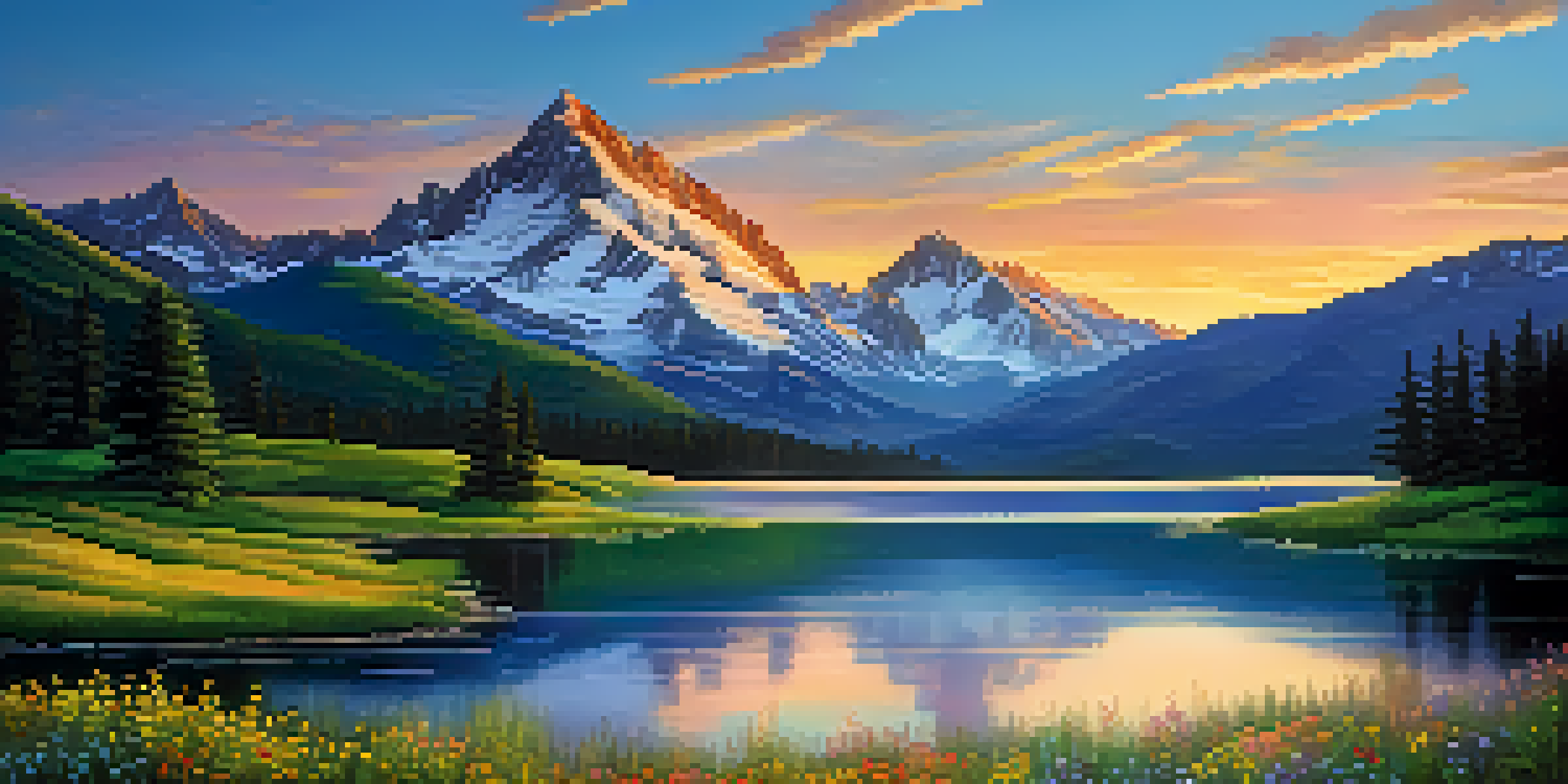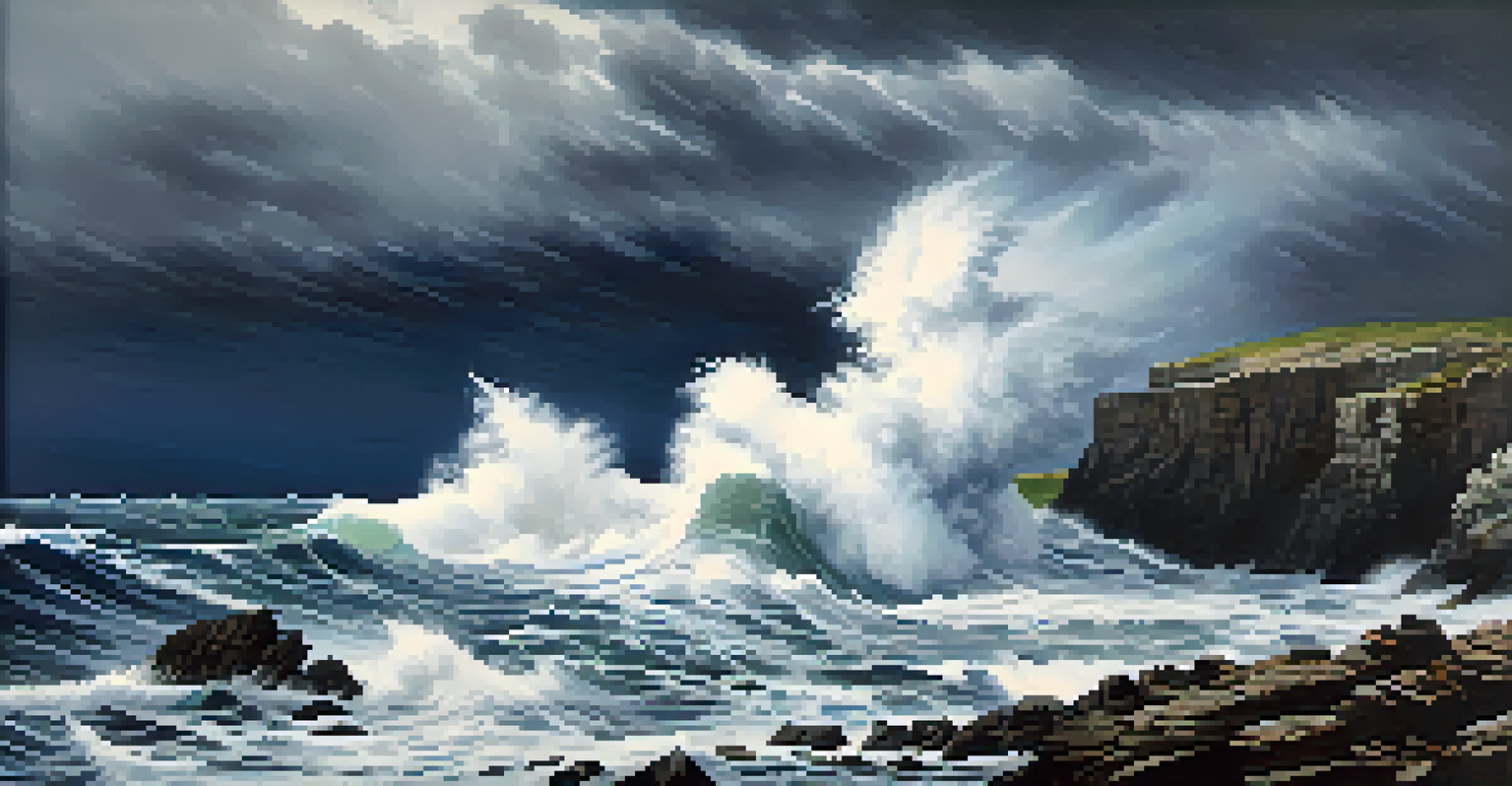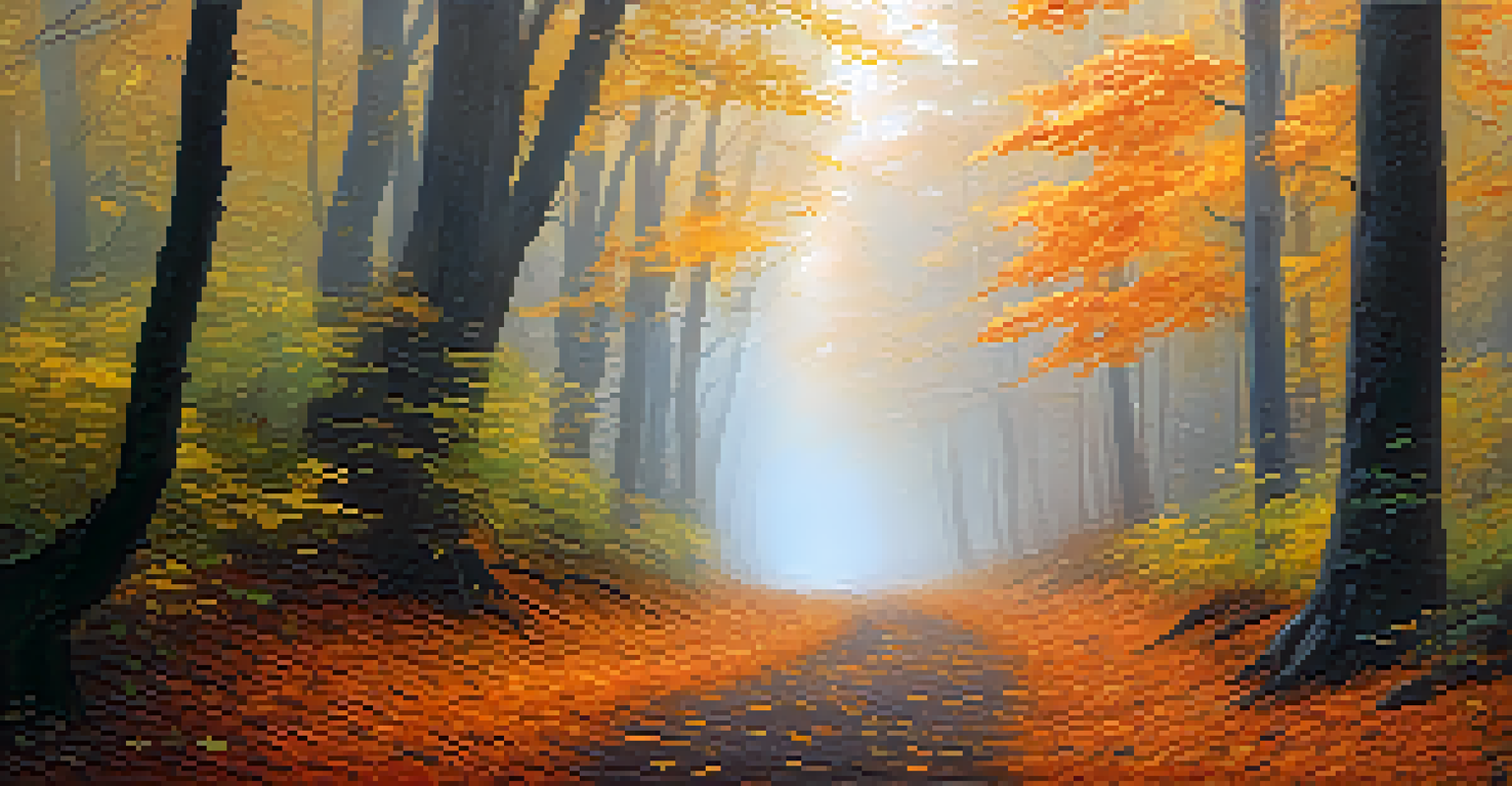The Impact of Weather on Landscape Photography Techniques

Understanding the Role of Light in Landscape Photography
Light is a fundamental element in photography, significantly affecting the mood and tone of your images. Different times of day and varying weather conditions change the quality of light, resulting in distinct photographic opportunities. For instance, golden hour, shortly after sunrise or before sunset, bathes landscapes in a warm glow that enhances colors and textures.
Photography is the story I fail to put into words.
Conversely, overcast days provide a soft, diffused light that minimizes harsh shadows and highlights, making them ideal for capturing details in nature. This kind of lighting can also lend a moody, atmospheric feel to your photographs. Understanding how to work with different lighting conditions allows photographers to adapt their techniques to achieve the desired aesthetic.
Ultimately, being mindful of how weather affects light can help landscape photographers create compelling images that resonate with viewers. By learning to anticipate changes in light due to weather, you can refine your shooting schedule and improve your overall photography skills.
The Impact of Weather on Landscape Composition
Weather conditions can dramatically alter the composition of a landscape, offering unique elements to incorporate into your shots. For example, stormy weather may introduce dramatic cloud formations and dynamic light, adding depth and tension to your images. Photographers can leverage these features to create more compelling compositions that engage viewers.

Additionally, rain can enhance the vibrancy of colors in the landscape, making greens appear more lush and blues more vivid. This transformation often leads to stunning reflections in puddles or wet surfaces, creating intriguing visual layers. So, don't shy away from capturing landscapes when the weather turns; it can lead to exceptional results.
Light Shapes Landscape Photography
Understanding how different lighting conditions, like golden hour or overcast days, can dramatically influence the mood and quality of your landscape photos is essential for capturing stunning images.
By embracing the effects of weather on composition, photographers can push their creativity and discover new perspectives in familiar locations. Experimenting with different weather conditions encourages a dynamic approach to landscape photography.
How Different Seasons Affect Landscape Photography
Each season brings its own set of challenges and opportunities for landscape photographers. Spring is often celebrated for its blooming flowers and vibrant colors, while summer offers lush greenery and clear skies. Autumn, on the other hand, showcases a stunning array of warm hues as leaves change, providing a fantastic backdrop for landscape shots.
The best camera is the one you have with you.
Winter presents a unique challenge, with snow and ice transforming familiar landscapes into serene, minimalist scenes. Capturing the stark contrast between white snow and dark trees can yield striking images. Each season requires photographers to adapt their techniques and gear to best suit the conditions.
Understanding how seasonal changes impact photography can help you plan your shoots more effectively. By being aware of what each season offers, you can maximize your opportunities to capture breathtaking landscapes.
Utilizing Weather to Create Atmosphere in Photos
Weather can be a powerful tool for creating atmosphere in landscape photography. Misty mornings can evoke a sense of mystery and tranquility, while stormy skies can add drama and intensity to your images. By intentionally choosing to shoot in specific weather conditions, you can set the mood you want to convey.
For example, capturing a serene lake on a foggy day can emphasize calmness, drawing viewers into the scene. On the flip side, photographing a rugged coastline during a storm can evoke feelings of power and wildness. The emotional response elicited from your audience can be significantly influenced by the weather present in your photographs.
Weather Enhances Composition
Weather not only alters the visual elements of a landscape but can also introduce unique opportunities, such as dramatic clouds during storms or vibrant colors after rain, enriching your photographic compositions.
By leveraging weather to enhance atmosphere, photographers can tell compelling stories through their images. This approach encourages a deeper connection between the viewer and the landscape.
Preparing for Unpredictable Weather Conditions
One of the realities of landscape photography is that weather can be unpredictable. A sunny morning can quickly turn into a downpour, so it’s essential to be prepared for various conditions. Carrying protective gear for your camera, such as rain covers and lens hoods, can help safeguard your equipment while allowing you to capture stunning shots.
Additionally, keeping an eye on weather forecasts and understanding local patterns can help you anticipate changes and plan your outings accordingly. Apps and websites that provide real-time updates can be invaluable for landscape photographers. Having a flexible shooting schedule allows you to adapt to shifting weather conditions.
By being prepared for the unexpected, you can seize opportunities that others might miss. Embracing the unpredictable nature of weather can lead to unique and memorable landscape photographs.
Mastering Post-Processing for Weather Variations
Post-processing is a crucial aspect of landscape photography, especially when working with varying weather conditions. Adjusting exposure, contrast, and color balance can enhance the visual impact of your images. For instance, you might want to boost the vibrancy of colors captured on a cloudy day or reduce the glare from bright sunlight.
Software like Adobe Lightroom and Photoshop offers a range of tools to help enhance your photographs. Learning how to effectively use these tools can take your images to the next level, allowing you to bring out the best in every weather scenario. Understanding the nuances of post-processing can help you achieve the desired mood and atmosphere.
Patience is Key in Photography
Cultivating patience allows photographers to wait for the perfect moment, whether it's capturing fleeting light or unique weather phenomena, leading to more impactful landscape images.
Ultimately, mastering post-processing techniques enables photographers to complement their skills in the field. It creates a seamless workflow that enhances the storytelling aspect of landscape photography.
The Importance of Patience in Weather-Driven Photography
Patience is a vital trait for any landscape photographer, especially when dealing with variable weather conditions. Sometimes, the best shots require waiting for the right moment, whether it's for the clouds to part or the light to change. This waiting game can be frustrating but often leads to the most rewarding outcomes.
For instance, a breathtaking sunrise may only last for a few fleeting moments, and being prepared to capture it can make all the difference. Additionally, unique weather events, like rainbows or dramatic storms, are often unpredictable and require a photographer's readiness to seize the moment when it arises.

By cultivating patience and embracing the unpredictability of weather, photographers can learn to appreciate the process as much as the results. This mindset fosters creativity and resilience, essential qualities for anyone passionate about landscape photography.